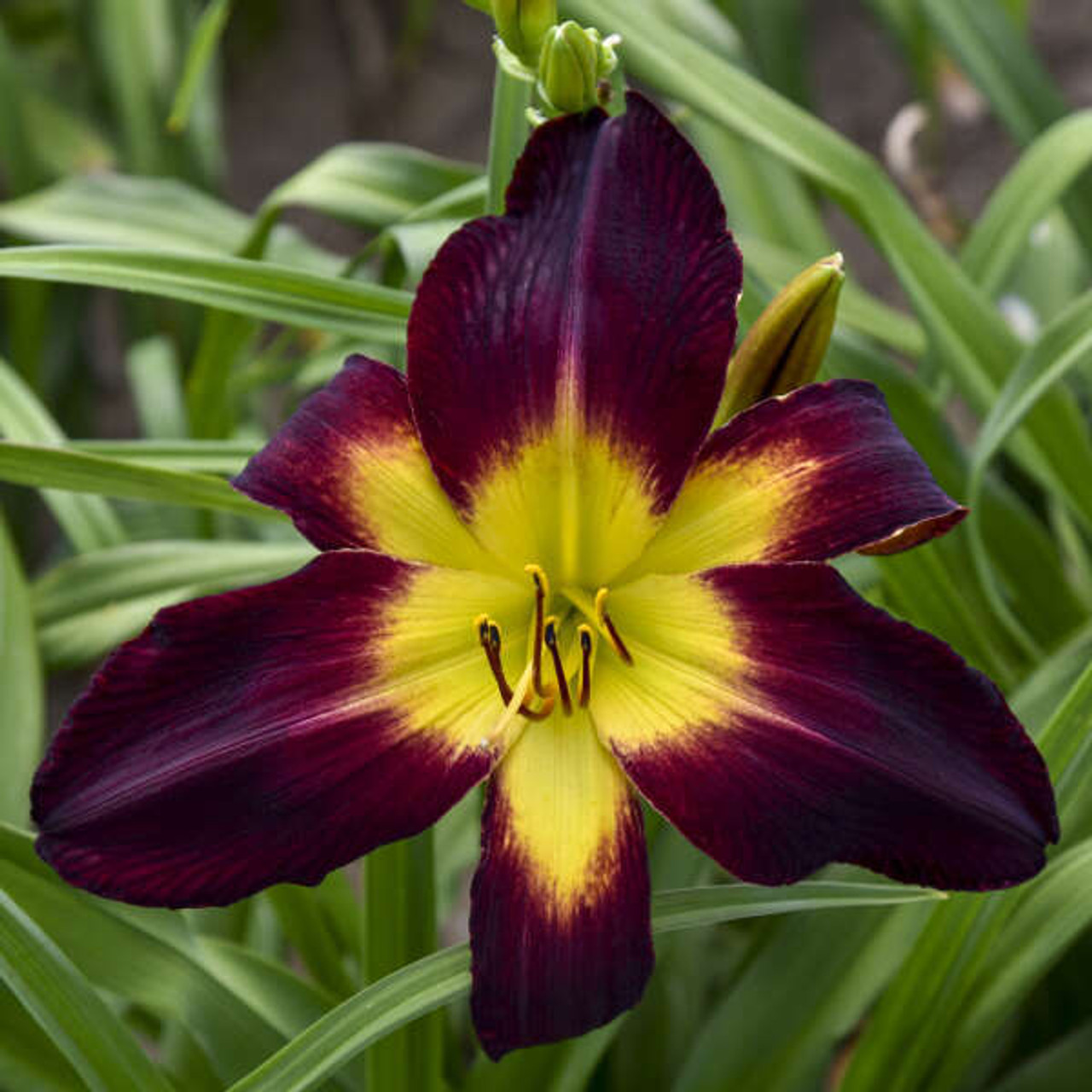Product Description
Hemerocallis 'Persian Ruby' (25) Bare Root Plants
Common Name: Daylily
An easily recognizable daylily that's a must-have for your garden! Deep purplish red, spoon-shaped flowers are massive – nearly 8" across. The large green throat is a nice contrast to the dark petals. Compared to the popular 'Ruby Spider', flowers are more purple in color. 'Persian Ruby' demands attention when it explodes with flowers in midsummer thanks to its high bud count.
- Early Midseason Bloomer
- Dormant foliage.
- Tetraploid
American Hemerocallis Society Honorable Mention (AHS first stamp of approval) -- 2005
American Hemerocallis Society Award of Merit (Outstanding beauty and performance over a wide area of the country) -- 2008
Height: 30.0 Inches
Spread: 18.0-24.0 Inches
Hardiness Zones: 3,4,5,6,7,8,9
Flower Color: Purple shades
Foliage Color: Green shades
Full Sun to Part Shade
Low to Average Water Needs
Poor to Fertile Soil Quality
Bloomtime: Early Summer
Attracts Butterflies and Hummingbirds
Bee Friendly
Rabbit Resistant
Growth Rate: Medium
Border Plant , Easy To Grow, Erosion Control, Mass Planting, Salt Tolerant
Hemerocallis 'Persian Ruby' is a striking daylily known for its rich, deep red blooms and vigorous growth. Here is a breakdown of its key features and growing requirements:
Key Features:
- Deep Red Flowers: 'Persian Ruby' produces large, velvety, deep purplish-red flowers with a prominent yellow-green throat. The blooms are often described as having a slightly ruffled or spoon-shaped petal.
- Large Blooms: The flowers are quite large, reaching up to 7-8 inches in diameter, making a bold statement in the garden.
- Reblooming: This daylily is a dependable rebloomer, meaning it will produce multiple rounds of flowers throughout the summer, extending the bloom period.
- High Bud Count: 'Persian Ruby' is known for its high bud count, meaning each flower stalk will produce numerous buds, resulting in a profusion of blooms.
- Dormant Foliage: It has dormant foliage, meaning the leaves will die back in the fall and new growth will emerge in the spring.
- Vigorous Growth: It is a vigorous grower and will quickly establish itself in the garden.
Growing Conditions:
- Zones: 3-9 (It is hardy in a wide range of climates)
- Sun: Full sun to partial shade. It prefers at least 6 hours of sunlight per day for best flowering.
- Soil: Adaptable to a variety of soil types but prefers well-drained soil. Amend the soil with compost or other organic matter before planting.
- Water: Water regularly, especially during dry spells, to keep the soil consistently moist.
Care Tips:
- Deadheading: Remove spent flowers to encourage more blooms and prevent seed pod formation.
- Division: Divide clumps every few years to prevent overcrowding and rejuvenate the plant.
- Fertilizing: Apply a balanced fertilizer in spring to promote healthy growth and abundant blooms.
Uses in the Landscape:
- Borders: Its vibrant blooms and vigorous growth make it perfect for adding color and texture to borders.
- Mass Plantings: Planted in groups, it creates a stunning display of deep red flowers.
- Cottage Gardens: Its classic daylily form fits perfectly in cottage-style gardens.
- Containers: It can be used in containers to add a pop of color to patios and decks.
- Erosion Control: Its vigorous growth and spreading habit make it useful for erosion control on slopes.
If you are looking for a daylily with rich, deep red blooms, reliable reblooming, and vigorous growth, Hemerocallis 'Persian Ruby' is an excellent choice. Its stunning flowers will add a touch of elegance and drama to your garden.
Other Details
The most important part of the plant is its root system. Healthy roots are the foundation of a healthy, vibrant plant. The type of plug container used is based on the specific needs of the plants. Perennials offered as bare root traditionally perform better when planted as bare root.Planted in a specialized mix, potted plants have well established root systems. Top growth stage will vary depending on the current life cycle and time of year when shipped. In Winter and early Spring dormant plants may be shipped. Dormant plants may be planted right away, even before the last frost date.
Most bare root varieties are field grown for at least one season, though Hemerocallis and Hosta are grown for two seasons. The bulk of the soil is removed during the harvesting process and the tops of most varieties are trimmed back to the crown. They are graded, packed in shredded aspen or sphagnum moss and stored in freezers until ready to be shipped.
See our Container Sizes and Bare Root Perennials pages for more information.
Plant information and care is provided in the Overview section, Plant Genus Page and general information is provided in the Planting Care & Guides. Additional questions can be asked on each Plant page.
Plant Spacing: Using the maximum mature spread or width of a plant to guide spacing, ensures space to grow to full size. To fill an area sooner, plant them closer together. Just remember, future thinning or transplanting may be needed.
Water: Keep a close eye on newly planted perennials, especially throughout the first growing year. Most early plant loss is due to too much or too little water!













